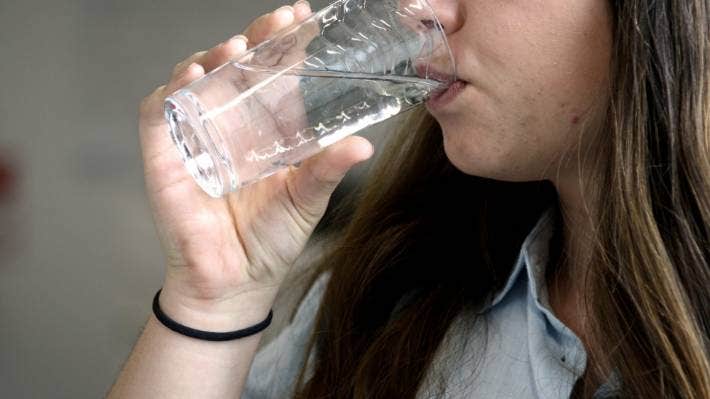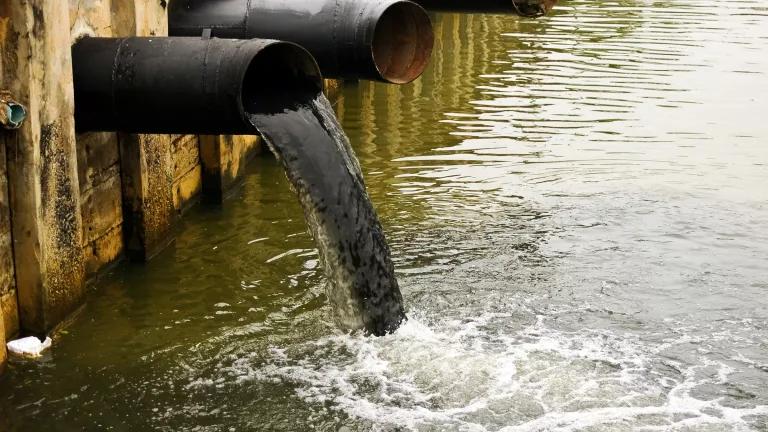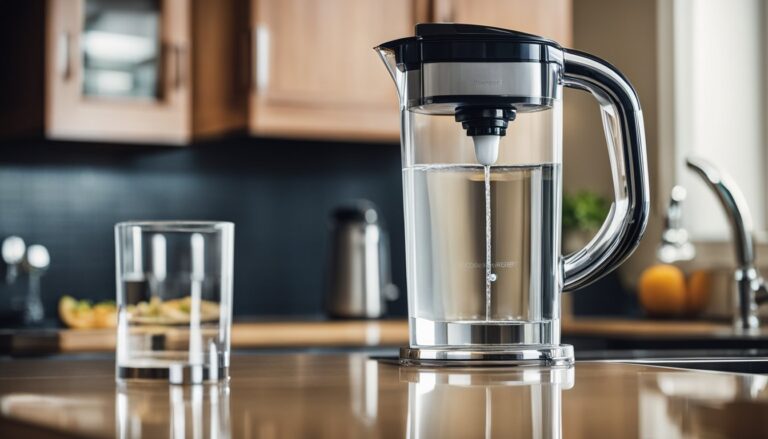Understanding Tap Water: Reasons why Tap Water is So Bad
Tap water is a fundamental part of our everyday lives, serving as a primary source of hydration for most of us.
Have you ever considered what lurks beneath the surface of seemingly harmless tap water?
Let’s delve into the depths of tap water, exploring the various contaminants that can be found, such as chlorine, fluoride, heavy metals, and microorganisms. We will also investigate how tap water can affect our health, both in the short and long term.
We will provide insights into methods to improve the quality of tap water, including the different types of water filters available and the contaminants they can remove. We will examine the environmental impacts of tap water, shedding light on its effects on marine life, land ecosystems, and contribution to pollution.
So, let’s unravel the mysteries of tap water and discover why it may not be as benign as it seems.
What is Tap Water?
Tap water, also known as drinking water, is the main source of water supply for residential, commercial, and industrial use. It plays a vital role in daily life, serving as a crucial component for various activities such as cooking, bathing, and staying hydrated. With its convenient accessibility through faucets in households and public places, tap water is a cost-effective and sustainable option for meeting daily hydration needs. Adherence to stringent quality standards ensures that tap water is safe for consumption, contributing to overall community health and well-being.

What Contaminants are Found in Tap Water?
Tap water can contain a range of contaminants and pollutants, including harmful chemicals such as lead and arsenic, posing potential health risks to consumers. Without superior water filtration you and your family are exposed to all manner of contaminants!
What is Chlorine?
Chlorine is a commonly used chemical in tap water treatment, aimed at disinfecting the water and eliminating waterborne bacteria and viruses. It plays a crucial role in maintaining the safety of drinking water by effectively neutralizing harmful pathogens. When introduced into the water supply, chlorine undergoes a chemical reaction that destroys the cell structure of bacteria and viruses, rendering them harmless.
This process, commonly known as chlorination, has been a cornerstone of public health for decades, significantly reducing the risk of waterborne diseases.
The residual chlorine in the distribution system provides a protective barrier, safeguarding the water from contamination as it travels to consumers’ taps.
What is Fluoride?
Fluoride is an additive in tap water known for its contribution to maintaining tap water quality and promoting dental health by reducing the risk of cavities and tooth decay.
It plays a crucial role in preventing tooth decay by strengthening the enamel and making teeth more resistant to acid and plaque. The addition of fluoride to tap water is a public health initiative that provides a cost-effective way to reach a large population, especially those who may not have access to regular dental care. Water quality standards ensure that fluoride levels are carefully monitored to provide the optimal health benefits while avoiding the risk of overexposure.

What are Heavy Metals?
Heavy metals such as lead and arsenic are among the tap water contaminants that raise significant health concerns due to their potential long-term toxic effects on human health.
Exposure to these heavy metals can lead to severe health issues, including damage to the nervous system, kidney damage, and developmental delays in children. The presence of these contaminants in tap water poses a serious threat to public health, prompting the need for effective mitigation measures.
Installations of filtration systems and regular testing of tap water quality are essential steps to reduce the levels of heavy metals, ensuring safer and healthier drinking water for households and communities.
What are Microorganisms?
Microorganisms in tap water, including waterborne bacteria, viruses, and parasites, are known to contribute to the spread of waterborne diseases and infections, posing a threat to public health.
These microorganisms can be particularly harmful to individuals with weakened immune systems, children, and the elderly. They can cause illnesses such as gastroenteritis, typhoid fever, and hepatitis A.
To safeguard against waterborne pathogens, it is essential to ensure proper water treatment and disinfection processes. Regular monitoring of water quality by public health authorities and following recommended water treatment guidelines can significantly reduce the risks associated with consuming contaminated tap water.

How Does Tap Water Affect Our Health?
The consumption of tap water carries potential health risks, including the transmission of waterborne illnesses due to the presence of contaminants and microorganisms, impacting both short-term and long-term health.
These contaminants, such as bacteria, viruses, and parasites, can cause gastrointestinal issues, fever, and even more severe conditions in vulnerable populations. Prolonged exposure to these impurities may lead to chronic illnesses, such as gastrointestinal diseases or compromised immune function.
To mitigate these risks, it’s essential for water treatment facilities to adhere to strict regulations and for individuals to use filtration systems or consume bottled water when unsure of the tap water quality.
What Are the Short-term Effects of Drinking Tap Water?
Short-term effects of drinking tap water contaminated with bacteria or viruses may include gastrointestinal issues, flu-like symptoms, and other acute health disruptions.
Individuals who consume contaminated tap water may experience nausea, vomiting, diarrhea, and stomach cramps. These symptoms are typically indicative of gastrointestinal infections caused by pathogens such as E. coli, norovirus, or campylobacter.
Treatment for waterborne illnesses often involves hydration, rest, and in severe cases, medical intervention. Prevention measures, such as regularly boiling water or using water filtration systems, can greatly reduce the risk of exposure to harmful bacteria and viruses present in tap water.
What Are the Long-term Effects of Drinking Tap Water?
Long-term consumption of tap water containing contaminants such as heavy metals or toxins can lead to chronic health conditions, including organ damage, developmental issues, and increased cancer risks.
These persistent contaminants, when ingested over extended periods, can accumulate in the body and contribute to various chronic health issues. Heavy metals like lead, arsenic, and cadmium have been associated with cardiovascular problems, impaired cognitive function, and kidney damage. Toxins such as pesticides and industrial chemicals may pose long-term threats to the nervous system, hormonal balance, and reproductive health. Therefore, ensuring the safety and purity of tap water is crucial for preventing potential long-term health implications.

How to Improve the Quality of Tap Water?
Improving the quality of tap water involves utilizing water filtration systems and water purification methods to effectively remove contaminants, including the reduction of chlorine and other harmful substances.
These strategies can range from simple activated carbon filters to advanced reverse osmosis systems. Water filtration uses physical barriers or chemical processes to remove impurities, while purification methods like UV sterilization and distillation eliminate bacteria and viruses. It’s crucial to consider the specific contaminants present in your tap water to select the most suitable technology for mitigation.
By integrating these advanced technologies, tap water can be made safer and healthier for consumption.
What Are the Different Types of Water Filters?
Various types of water filters, such as activated carbon filters and reverse osmosis systems, are designed to remove contaminants and waterborne toxins from tap water, ensuring safer and cleaner water for consumption.
Activated carbon filters are particularly effective in removing chlorine, volatile organic compounds (VOCs), and unpleasant odors, while reverse osmosis systems excel in eliminating a wide range of contaminants including lead, arsenic, and fluoride.
UV filters use ultraviolet light to destroy harmful microorganisms like bacteria and viruses, providing an extra layer of protection against waterborne pathogens.
Each filtration technology offers unique benefits in addressing specific water quality challenges, enhancing the overall safety and taste of drinking water.

What Contaminants Do Water Filters Remove?
Water filters are capable of removing a wide range of tap water contaminants, including pollutants, bacteria, parasites, and other harmful substances that compromise water safety and quality.
These filters work by utilizing various filtration methods such as activated carbon, reverse osmosis, and UV sterilization to effectively eliminate impurities and microorganisms. By targeting specific pollutants like chlorine, lead, pesticides, and microbial cysts, water filters play a critical role in ensuring that drinking water is free from potential health hazards. This process not only improves the taste and odor of water but also provides peace of mind by safeguarding against potential waterborne illnesses and diseases.
What Are Some Alternatives to Tap Water?
In addition to tap water, alternatives such as bottled water and water purification systems offer options for accessing safe and clean drinking water, addressing concerns related to waterborne pathogens and contaminants.
Bottled water provides a convenient and portable solution for individuals on the go, ensuring access to safe drinking water in various settings. Meanwhile, home purification systems utilize advanced filtration technologies to remove impurities and microbes, delivering peace of mind to households concerned about water safety. These alternatives play a crucial role in mitigating the risks associated with drinking untreated water, offering diverse options to suit different preferences and needs.
What Are the Environmental Impacts of Tap Water?
The utilization and distribution of tap water can have environmental impacts, contributing to the release of waterborne pollutants and affecting ecosystems through water distribution and management.
This can lead to an increase in the concentration of contaminants in water bodies, threatening aquatic life and disrupting the delicate balance of ecosystems. The energy-intensive process of treating and distributing tap water can contribute to carbon emissions and energy consumption, further exacerbating its environmental impact.
Efforts to manage and mitigate these effects include:
- Implementing stricter water quality regulations.
- Investing in sustainable water management practices to reduce the environmental footprint of tap water usage.
How Does Tap Water Affect Marine Life?
Tap water contamination can directly impact marine life through the release of waterborne toxins and pollutants, affecting aquatic habitats and ecosystems.
These water pollutants can disrupt the delicate balance of marine ecosystems, leading to harmful algal blooms, habitat degradation, and a decline in biodiversity. The accumulation of contaminants in marine organisms can pose risks to human health through the consumption of contaminated seafood.
To mitigate these environmental impacts, it is crucial to implement effective wastewater treatment processes, promote sustainable agricultural practices to reduce nutrient runoff, and raise awareness about the significance of preserving clean water sources for the well-being of marine life.
What Are the Effects of Tap Water on Land Ecosystems?
The impact of tap water on land ecosystems includes the potential spread of waterborne pathogens and the infrastructural challenges associated with water management, influencing terrestrial environments and biodiversity.
Waterborne pathogens present in tap water can pose significant risks to terrestrial ecosystems, affecting the health of plants, animals, and microorganisms. Inadequate water infrastructure can lead to issues such as erosion, sedimentation, and pollution, impacting the overall land management practices. These factors contribute to the complex web of interactions within terrestrial ecosystems, emphasizing the importance of addressing water quality and management for the preservation of biodiversity and ecological balance.
How Does Tap Water Contribute to Pollution?
Tap water can contribute to water pollution through various factors, including inadequate testing, regulatory shortcomings, and the release of contaminants, necessitating comprehensive water regulations and management practices.
It is crucial to monitor tap water quality, ensuring the implementation of stringent testing and regulatory measures to safeguard public health. Effective management practices, such as source water protection and treatment optimization, are vital in addressing potential pollution concerns.
Constant vigilance in detecting and addressing contaminants, including industrial runoff and agricultural pollutants, is essential to maintain water quality standards and protect aquatic ecosystems. Public awareness and participation in water conservation efforts further complement the importance of proactive regulatory processes and sustainable management initiatives.

Frequently Asked Questions (FAQs)
Why is Tap Water So Bad For Us?
Tap water can contain harmful contaminants such as bacteria, viruses, pesticides, and heavy metals that can have negative health effects on our bodies.
What are some of the main reasons tap water is considered unhealthy?
Tap water can be contaminated with chemicals and pollutants from various sources, including pollution from industrial and agricultural activities.
How does drinking tap water affect our health?
Drinking tap water that is contaminated with harmful chemicals and pollutants can lead to various health problems, including gastrointestinal issues, skin problems, and even long-term health effects.
What are the potential risks of drinking tap water?
The potential risks of drinking tap water include increased exposure to harmful chemicals and contaminants, which can lead to acute and chronic health problems.
Are there any benefits to drinking tap water?
While tap water may pose health risks, it also contains essential minerals such as calcium and magnesium, which are beneficial for our bodies. Additionally, tap water is often more affordable and more accessible than bottled water.
How can we protect ourselves from the negative effects of tap water?
One way to protect ourselves from the negative effects of tap water is by using a water filtration system at home. This can help remove harmful contaminants and ensure that the water we drink is safe for consumption.







